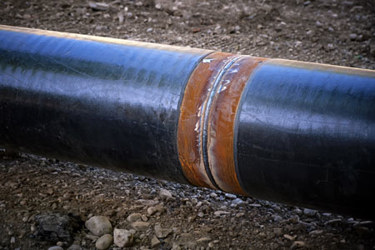Pipe Rehabilitation Strategies: Extending Infrastructure Life And Ensuring Water Quality
By Ellie Gabel

Aging water and wastewater infrastructure is a growing challenge in the U.S. and worldwide, with many pipelines operating well beyond their intended lifespan. As corrosion and structural failures become more common, the risks to quality, public health, and service reliability increase.
However, full replacement can be expensive and disruptive, making pipe rehabilitation a more cost-effective solution. Advanced techniques like trenchless technology and protective linings can extend infrastructure life while ensuring safe, clean water delivery. Proactive repair strategies help prevent costly emergency repairs and support long-term sustainability and regulatory compliance.
Challenges Of Aging Water Infrastructure
Aging pipelines are a growing problem as leaks and blockages are becoming more frequent. In the U.S., water main breaks occur every two minutes, which leads to the loss of nearly 6 billion gallons of treated water every day. This wastes a critical resource, drives up operational utility costs and increases the risk of contamination. When pipelines deteriorate, they compromise quality and create costly emergency repairs that strain already limited budgets.
Beyond the immediate financial and operational challenges, aging infrastructure raises serious regulatory and environmental concerns. Stricter quality standards and sustainability goals push municipalities and utilities to find long-term solutions that minimize water loss and protect public health.
Instead of waiting for failures, proactive rehabilitation strategies can extend infrastructure life, reduce repair costs, and ensure more efficient distribution. Investing in modern repair methods allows systems to improve reliability and maintain compliance.
Pipe Rehabilitation Strategies
Extending the life of aging pipelines requires more than quick fixes. Strategic repair methods are essential to maintaining water quality and service reliability. Here are modern methods that minimize disruptions while ensuring long-term infrastructure performance.
Trenchless Technologies For Minimal Disruption
Cured-in-place pipe is a rehabilitation method that restores damaged sewer systems without excavation or trench digging. A flexible, resin-coated liner is inserted into the existing pipe and cured, creating a durable, corrosion-resistant inner layer that extends its lifespan. Slip-lining is another effective technique that involves inserting a smaller pipe within the existing one to reinforce structural integrity and improve flow efficiency.
For more severe damage, pipe-bursting can break the deteriorated area while replacing it with a new one of equal or greater diameter. Horizontal directional drilling offers a noninvasive approach by installing new pipes with minimal surface disturbance. This makes it ideal for areas with heavy traffic or environmental restrictions.
Structural Rehabilitation Methods
Protecting and strengthening aging pipelines requires innovative rehabilitation techniques that enhance durability and efficiency. Protective coatings like epoxy and cement mortar linings help prevent corrosion and improve water flow by creating a smooth, long-lasting barrier inside pipes. Spiral-wound liners offer a structural reinforcement solution for weakened infrastructure, mechanically restoring them without needing a full replacement.
When leaks or fractures occur in concrete or clay pipes, grout injection provides a targeted fix, sealing cracks and preventing further deterioration. To ensure seamless connections during rehabilitation, a pipe-beveling machine creates precise edges on pipe ends, which allows for stronger, more secure welds or joints that enhance overall system performance.
Preventive Maintenance And Smart Technologies
Smart technology revolutionizes maintenance by helping utilities detect and prevent issues before they become costly problems. Advanced tools like smart sensors, acoustic monitoring, and CCTV inspections provide real-time data on leaks, blockages, and structural weaknesses, which allows early intervention.
To combat corrosion in metal pipes, cathodic protection systems use electrical currents to slow down deterioration and extend service life. AI-driven analytics take predictive maintenance even further by analyzing historical data to anticipate failures. Leveraging these innovations can reduce downtime, lower repair costs, and ensure long-term infrastructure reliability.
Benefits Of Proactive Pipe Rehabilitation
Much of the U.S.’s water infrastructure was built after World War II, and some water mains in older urban areas exceed a century in age. Rehabilitation is essential for extending service life and reducing costly replacements. Proactive repair methods prevent leaks and degradation, which helps maintain quality by reducing the risk of contamination. Reinforcing aging pipelines can enhance operational efficiency and minimize unplanned service disruptions.
Moreover, investing in modern strategies supports compliance with evolving quality regulations and aligns with long-term sustainability goals. Addressing infrastructure challenges before failures occur allows municipalities and utilities to protect resources, reduce costs, and ensure a safer water supply.
The Case For Proactive Pipeline Rehabilitation
Industry professionals must take a proactive approach by investing in regular condition assessments and modern rehabilitation strategies to extend the life of aging pipelines. Leveraging advanced technologies and innovative repair methods can reduce costly emergencies, improve water quality, and build a more resilient and sustainable infrastructure for the future.
 Ellie Gabel is a writer specializing in environmental science and innovative technologies. She can be reached at ellie@revolutionized.com.
Ellie Gabel is a writer specializing in environmental science and innovative technologies. She can be reached at ellie@revolutionized.com.
